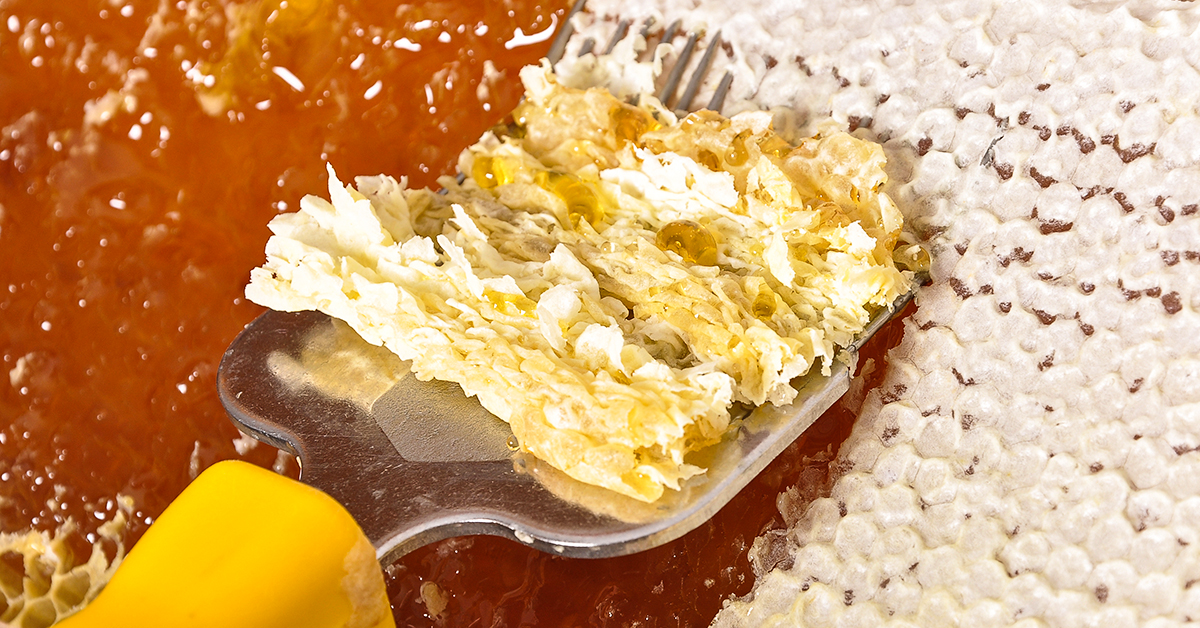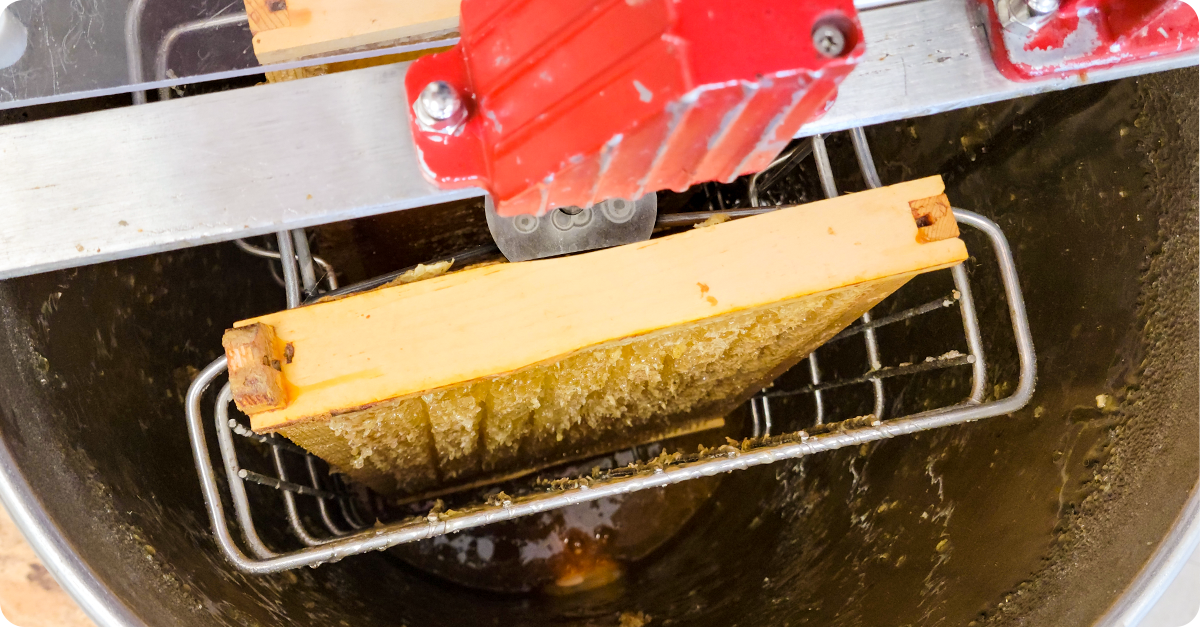
As a beekeeper, you have a greater connection with local agriculture. It allows you to learn more about the fruits, flowers and vegetables we grow, including which ones produce more nectar for the bee colony. Having bees nearby also helps every garden and tree in the neighborhood with increased pollination.
Of all of the benefits, the greatest personal one may still be enjoying fresh, homegrown honey. It’s the one automatically connected with beekeeping, and it comes with immense satisfaction. Honey seems to taste sweeter after all of your year-round work, plus it’s another area where we’re able to live self-sufficiently.
If you’re new to beekeeping–or are interested in starting–you’ll need to know the essentials for how to harvest honey from your beehive. How do you extract honey from the hive, when is the best time of year, and how should you store your fresh honey?
When To Harvest Honey
The greatest honey flow is when the flowers are in full bloom. Early spring will produce a minor honey flow, but the largest honey flow typically begins in June and continues into July.
Only collect honey in a clean comb, one that has not been in a brood chamber or otherwise contaminated by mice, wax moth, etc. You can harvest the first crop as soon as it’s capped so that you have an early varietal, or at least a springtime artisan honey to share or sell. Early honeys are light and mild while later honeys are darker and generally stronger. Be sure to name and label them for organizational ease.
When extracting honey, the honeycomb cells should be 90% capped. The remaining uncapped honey should not be able to run out of the cells for it to be completely ripe for extraction.

Honey may be extracted as late as September, although cold honey is more difficult to extract. The ideal temperature is in the range of 75-80 degrees.
As winter approaches, it’s important to leave the colony with at least 80 pounds of honey in the bottom two boxes. These boxes are their food to survive winter, and where they raise their young. This is why we don’t harvest honey from the bottom two boxes.

How to Harvest Honey
There are four steps for extracting and storing honey.
1. Pull Frames
Remove the frames from the hive. Avoid pulling the frames that have brood on them. Choose only the frames that have honey in them with the honey capped by beeswax.
2. Remove Wax Caps
There are two basic ways to remove wax caps and extract honey, both of which can be done at home.
Method #1
The crush and strain method involves scraping the honey and wax off the frames, crushing it, and straining the honey out of the wax. This is the least efficient method for the bees and will reduce your honey crop for the following year. The bees use the equivalent of 10 lbs of honey to produce 1 lb of wax.
Method #2
The second and more efficient method involves using a capping scratcher, cold knife, or electric ‘hot’ knife to remove the wax caps from each of the cells on the frames so the honey can drip. When using a cold knife or electric ‘hot’ knife, you will run the tool down the edge of the frames to remove just the outer cap over the honey.
3. Extract Honey
Continuing with Method #2, spin the uncapped honey frames in a manual or mechanical centrifuge honey spinner/extractor. (This is a mechanical device used in extracting honey from honeycombs without destroying the comb.) It preserves the wax and allows the bees to refill it the following year instead of rebuilding all the wax.
4. Store Your Honey
Store your honey in any food-safe container. You might consider an IFA food-grade five gallon bucket if you have a large harvest. Pint or quart glass canning jars and smaller food-grade buckets also work well for smaller quantities. We recommend you avoid using metal containers because a chemical reaction may occur.
A Tasty, Healthy & Beneficial Treat
Raw honey that comes straight from the honeycomb and is only strained before bottling will retain most of its beneficial nutrients and natural antioxidants. Aside from adding fresh, healthy honey in your tea, homemade baked goods, or anything else you love, it’s also enjoyed or useful in additional ways.
Serving honey in the comb is becoming more popular, especially among some restaurants and caterers. These businesses provide frames of capped honey for customers to scoop it out fresh. Along with the rich honey, beeswax can be used to make a myriad of items, including chapstick, facial and skin creams, lotions, soaps and candles.
Let Us Help
Harvesting your own healthy, delicious honey can and certainly will “bee” a sweet reward for you, your family and friends. If you need beekeeping supplies or helpful advice, drop by your local IFA Country Store. We’re always happy to help.
Information for this article was provided by Matt Bangerter, Assistant Manager, Logan IFA Country Store; and Leonard Hulet, Lawn & Garden, Turf & Ornamental Dept. Manager, St. George IFA Country Store.







